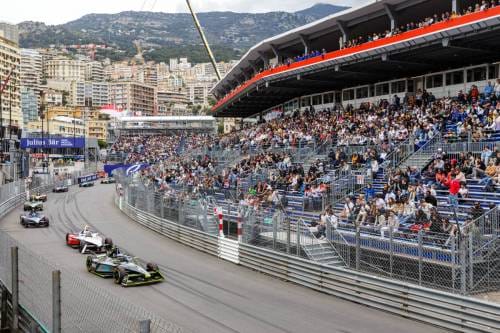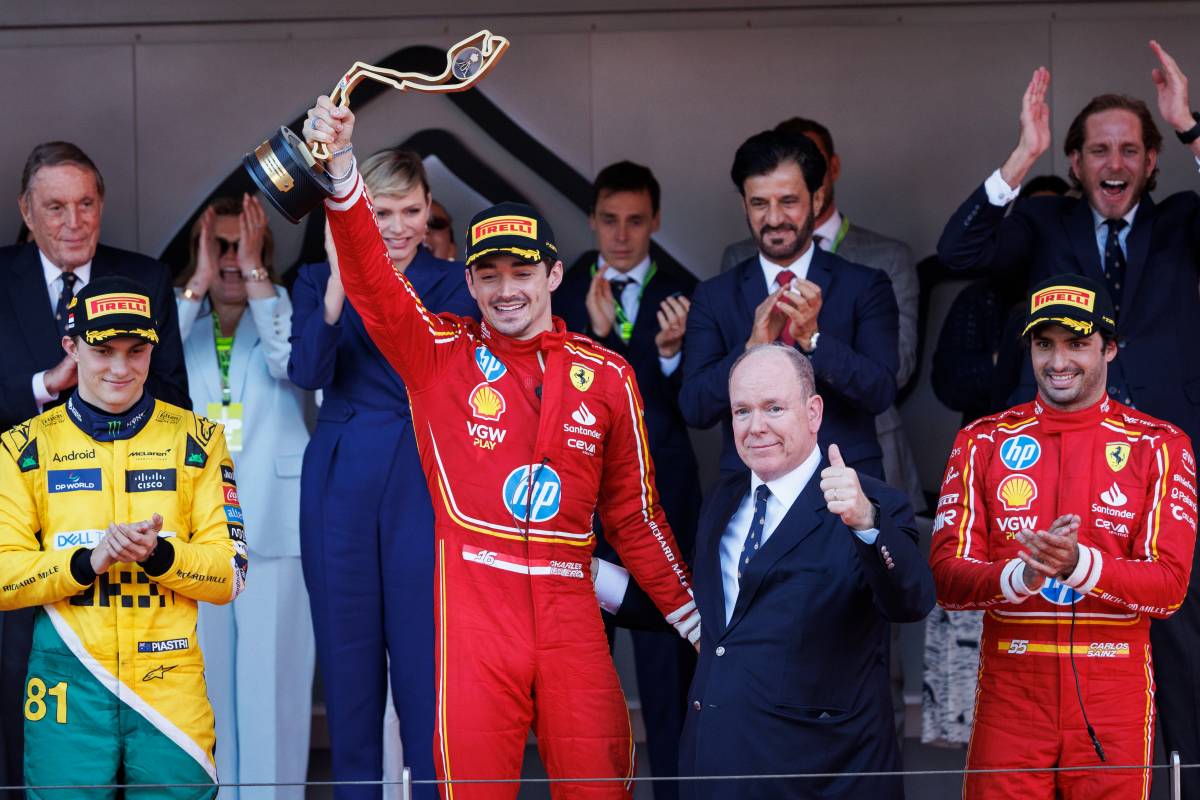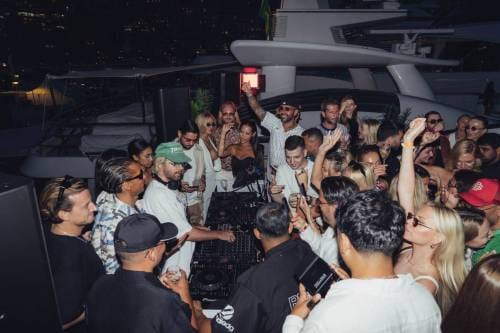Step into the past and buckle up for a thrilling ride through the annals of motorsport history. It is the 14th Grand Prix de Monaco Historique. Over three exhilarating days, this iconic event transformed the streets of Monaco into a nostalgic playground.
A Journey Through History
From the roaring engines of pre-war classics to the sleek lines of 1980s speedsters, the Grand Prix de Monaco Historique showcases the evolution of motorsport over eight distinct eras. What began as a celebration of Monaco’s rich racing heritage in 1997 has blossomed into a biennial extravaganza, attracting over 200 cars and capturing the hearts of motorsport aficionados worldwide.
The event is spread across three action-packed days offering a tantalizing lineup of races and events. From training laps on the Friday to qualifying sessions on Saturday, and then the main races on Sunday each moment is a testament to the passion and dedication of drivers and teams.
As the engines roared and the cars thundered through the streets of Monaco, spectators were transported through time, witnessing the evolution of race cars with each passing lap. From the simplicity of pre-war machinery to the technological marvels of the 1980s, every corner offers a glimpse into the relentless pursuit of speed and innovation.
The excitement didn’t end there. Within each series, a set of races unfold, culminating in a gripping showdown on race day. From pole position battles to wheel-to-wheel duels, every moment is charged with adrenaline and anticipation.
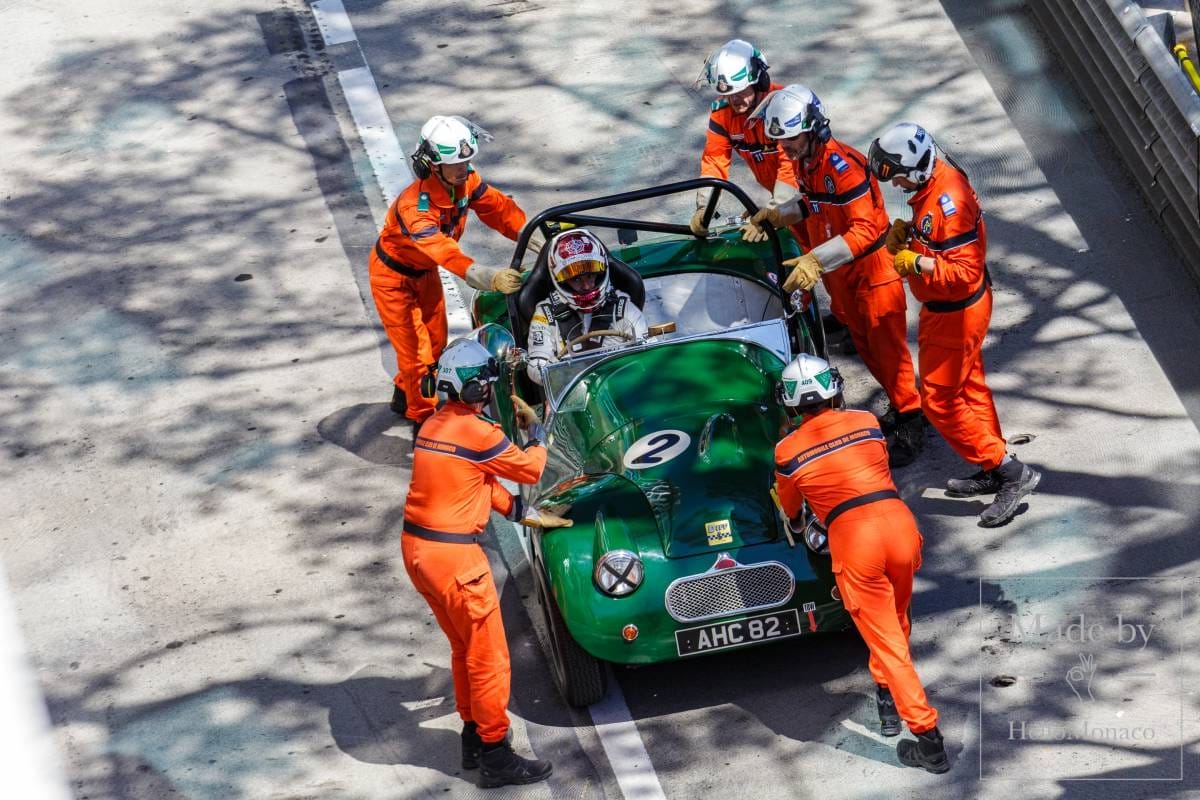
Great Cars … Great Drivers
The 14th Historic Grand Prix is all about almost a 100 years of great cars and great drivers. And. the greatest Drivers are honoured by naming each race after them. The list of races for the « 14th Historic » says it all:
Race A1 – Monaco Hero Louis CHIRON: Pre-war Grand Prix cars and Voiturettes
Race A2 – Juan Manuel FANGIO: Front-engine Grand Prix cars built before 1961
Race B – Graham HILL: Rear-engine, 1500, F1 Grand Prix cars from 1961 to 1965 and F2
Race C – Vittorio MARZOTTO: Front-engine Sport Racing cars from 1952 to 1957
Race D – Jackie STEWART: F1 Grand Prix cars 3L from 1966 to 1972
Race E – Niki LAUDA: F1 Grand Prix cars 3L from 1973 to 1976
Race F – Gilles VILLENEUVE: F1 Grand Prix cars 3L from 1977 to 1980
Race G – Ayrton SENNA: F1 Grand Prix cars 3L from 1981 to 1985
Here is flashback, by decade since 1924, on cars and drivers in the spotlight in 2024:
– 100 years ago (1924), the iconic Bugatti 35 was unveiled in Lyon, then winning the first two editions of Monaco Grand Prix in 1929 and 1930 in its compressor version. In 1984, Automobile Club de Monaco organized a Bugatti race to celebrate the 60th anniversary of the legendary Bugatti 35;
– 90 years ago (1934), the Mercedes single-seaters that won the last three pre-war Monaco Grand Prix races in 1935, 1936 and 1937, appeared. Also appearing on the circuits in 1934 was ERA (winner of the first Prince Rainier Cup in 1936, monopolizing the podium). ERA was again on the starting grid in 1950 for the 1st edition of the Monaco Grand Prix, counting for the brand-new Formula 1 World Championship;
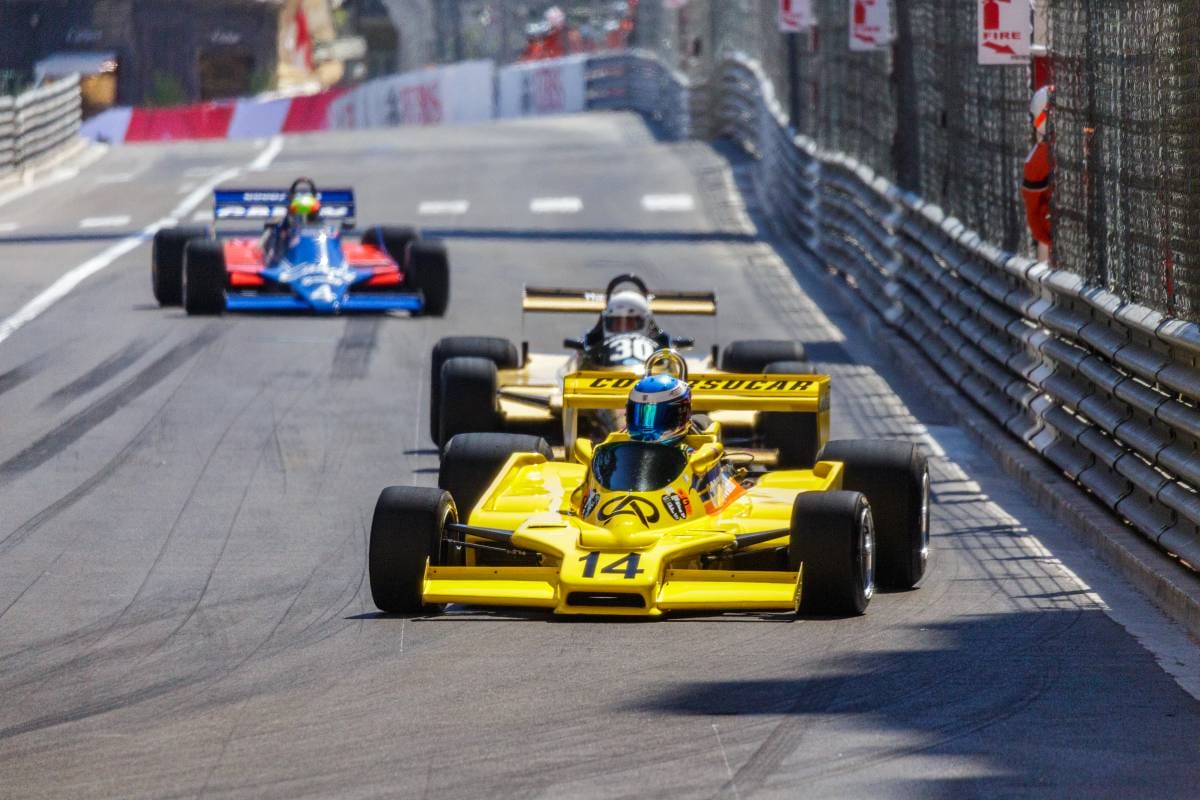
– 70 years ago (1954), Mercedes was still at the top of the bill, with the appearance of the W196 which crushed the Grand Prix scene in 1954 and 1955, Juan-Manuel Fangio winning World Championship titles in the same two years. Also in 1954, the appearance of the Maserati 250F left no one indifferent. The Italian cars were present in Monaco from 1955 to 1959, winning twice: in 1956 with Juan-Manuel Fangio, and in 1957 with Stirling Moss at the wheel;
– 60 years ago (1964), John Surtees, already a multiple Moto World Champion, also became one in Formula 1 with Ferrari. The Englishman was always present at the start of Monaco Grand Prix from 1960 to 1971, making 12 appearances. Later, Surtees became a full-fledged brand and manufacturer in the discipline, his single-seaters taking part of the Monaco Grand Prix between 1971 and 1978;
– 50 years ago (1974), the short-lived Hesketh brand entered the discipline. A young and flamboyant Lord, Thomas Alexander Fermor-Hesketh, along with his driver James Hunt, gave F1 a glamorous image in keeping with that of the Principality. It was also the year of the revelation for engineer Harvey Postlethwaite, who not only designed the first Hesketh, but also the Wolf WR1 which won three Grands Prix in its very first season in 1977, including the Monaco GP with the experienced Jody Scheckter at the wheel;
– finally, 40 years ago (1984), Ayrton Senna‘s already proven talent, in his modest Toleman-Hart, shone through when he took 2nd place in the rain, behind Alain Prost, at the 5th Grand Prix of his F1 career, held under torrential downpours in Monaco.
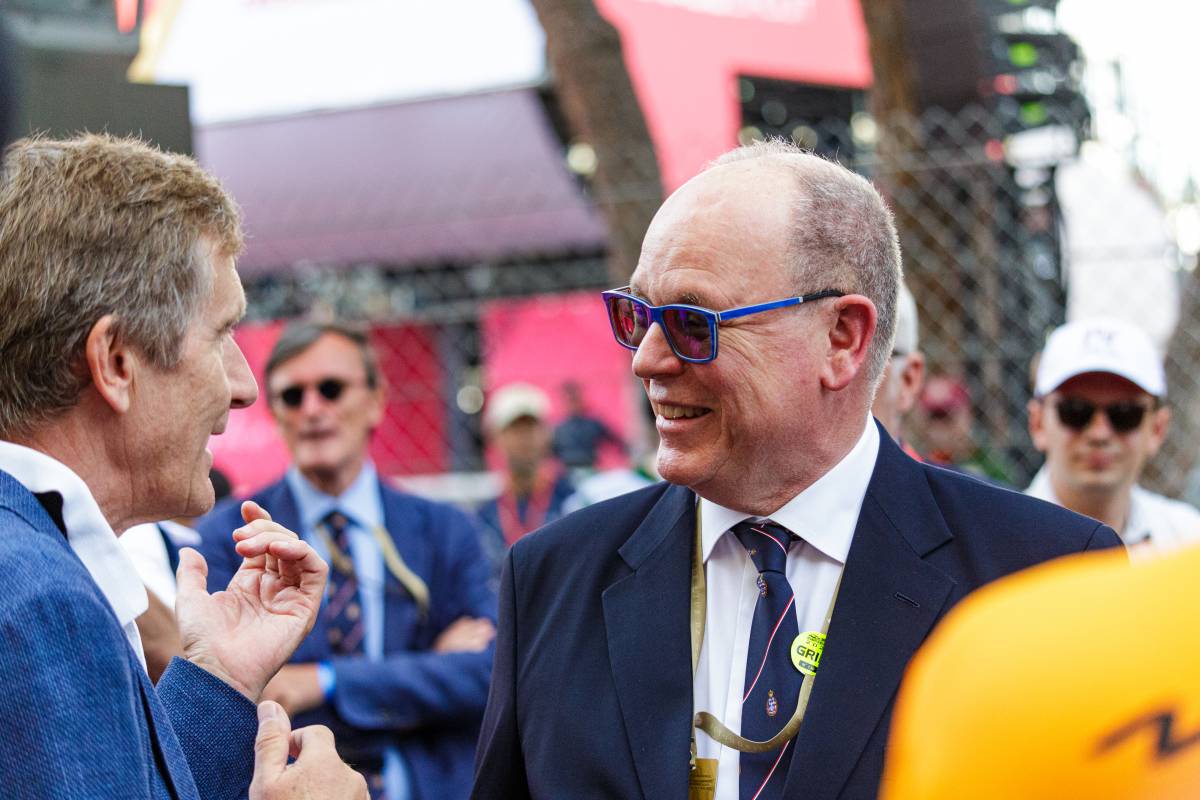
Senna Parade and Grand Prix Historique 2024 Final Results
Prince Albert II participated in the 14th Monaco Historic Grand Prix parade, which paid tribute to the memory of Ayrton Senna on 11 May. Bruno Senna (Ayrton Senna’s nephew), Thierry Boutsen and Charles Leclerc all joined the Prince in commemorating the triple F1 world champion and six-time winner of the Monaco Grand Prix. Ayrton Senna lost his life thirty years ago, on 1 May 1994, after a crash on the Imola circuit.
Five of the racing legend’s cars were featured in the parade, from the kart he drove to become South American champion in 1977 to his 1990 McLaren MP4/5 B. Behind the wheel of Senna’s 1985 Lotus 97T was non other than Thierry Boutsen. Ayrton Senna won the Monaco Grand Prix race more times than any other driver, with six victories (including five consecutive wins between 1989 and 1993) and his record remains unbeaten to this day.
Those nostalgic for the “F1 of yesteryear” and so many fans of Ayrton Senna, attended this exceptional parade in honour of the great Brazilian champion, organised by the Automobile Club de Monaco (ACM), in close collaboration with the Instituto Ayrton Senna, Lotus Héritage and the McLaren Academy.
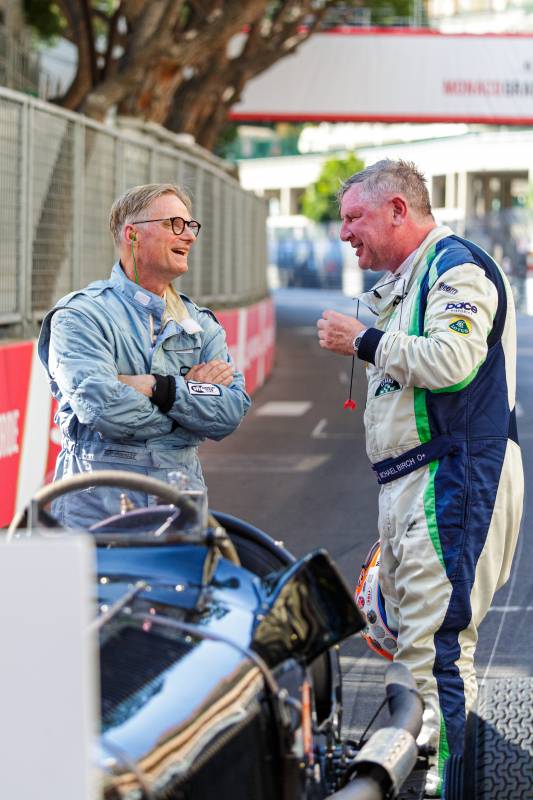
Here is more information on the beautiful Senna iconic racing machines paraded:
Senna’s go-kart in 1977
At the wheel of this go-kart, 17-year-old Ayrton Senna became South American Champion in 1977, during a race organised in Uruguay, in the town of San José. Young Senna also finished 2nd at the Brazilian Championship, on the Interlagos track. This go-kart now belongs to McLaren F1 Team Principal Zak Brown.
Formula Ford 2000: Senna’s Van Diemen RF82 in 1982
After a very successful 1981 season (12 wins in 20 Formula Ford 1600 races, British Champion), Senna discovered the Van Diemen RF82 equipped with a much more powerful 2-litre engine. At just 22 years of age, he went on to win a record number of races (22) and the European Championship title.
The Kart and Van Diemen RF82 were driven by Gabriele Bortoleto and Cristina Gutiérrez, two McLaren “Drivers Academy” drivers.
Formula 3: the Ralt RT3 at the 1983 Macau Grand Prix
The 1983 Formula 3 season was dominated by an insatiable Ayrton Senna, despite the formidable competition from a young Englishman, Martin Brundle, who gave him a hard time. The Brazilian came even closer to F1 by finishing British Champion with 12 victories. On November 20, 1983, Senna rounded off his masterclass with a prestigious victory at the Macau Grand Prix, at the wheel of this Toyota-powered Ralt RT3 entered by West Surrey Racing team and local billionaire Teddy Yip.
The Ralt RT3 was driven by Eddie Irvine, Formula 1 World Championship runner-up in 1999 and Senna’s teammate at the time.
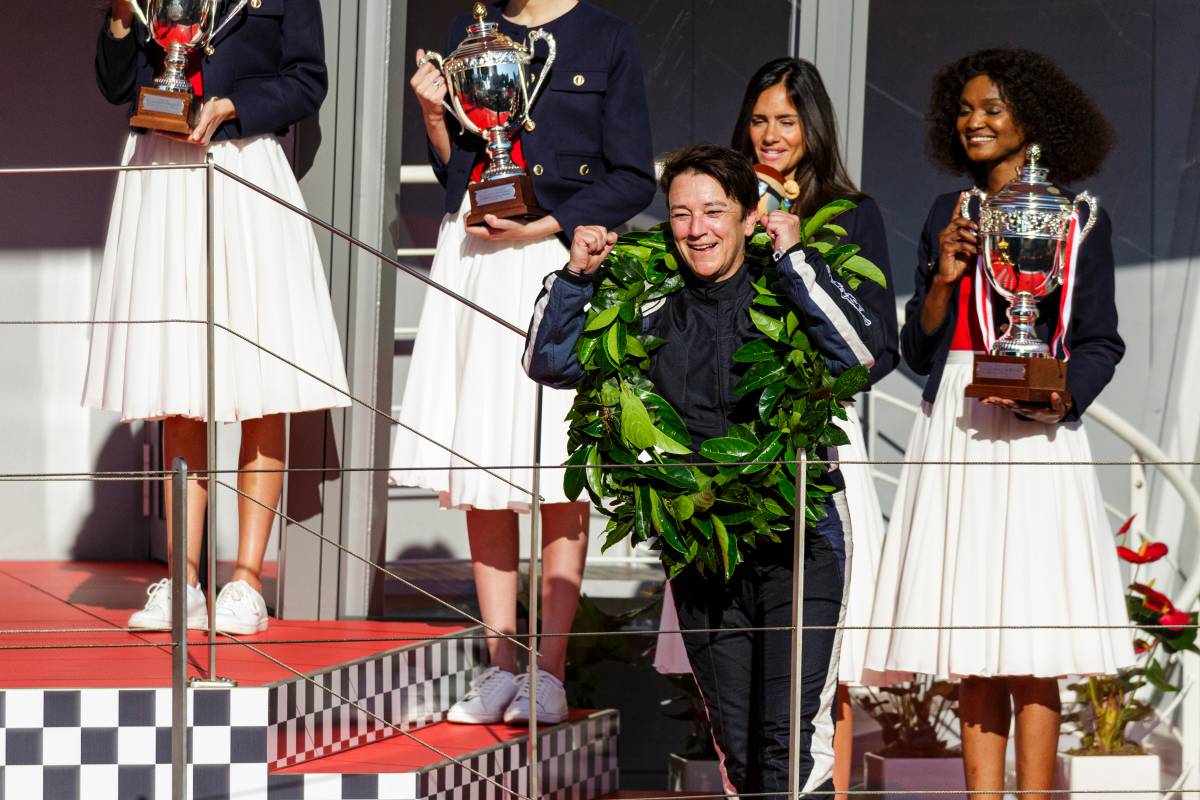
Formula 1: the 1984 Toleman TG184
This was the first F1 car driven by Ayrton Senna in the World Championship. Designed by Rory Byrne, it was very heavy, without power steering and powered by a British turbo engine, a Hart with around 600bhp. He scored three podiums in this car, including his famous 2nd place in Monaco, behind Alain Prost, in torrential rain that prompted Jacky Ickx to wave the red flag. They remain the only three podium finishes in the history of the British team founded by Ted Toleman.
The Toleman was driven by Stefan Johansson a Swedish racing driver who drove in Formula One for both Ferrari and McLaren, among other teams.
Formula 1: the 1985 Lotus 97T
Powered by a 1.5-litre Renault V6 turbo engine developing 760bhp, the Lotus 97T (T for turbo) was the F1 car in which the future “Magic Senna” won his first two Grands Prix, at Estoril and Spa-Francorchamps. It was equipped with several liquid crystal displays in the cockpit, a novelty at the time. It was a delight for Senna, who was very data-hungry. This now legendary single-
seater also enabled the Brazilian to take his first seven pole positions, all in 1985.
This Lotus 97T was driven in the Parade by Belgian Thierry Boutsen, who has won three times in F1 and who finished on the podium 15 times.
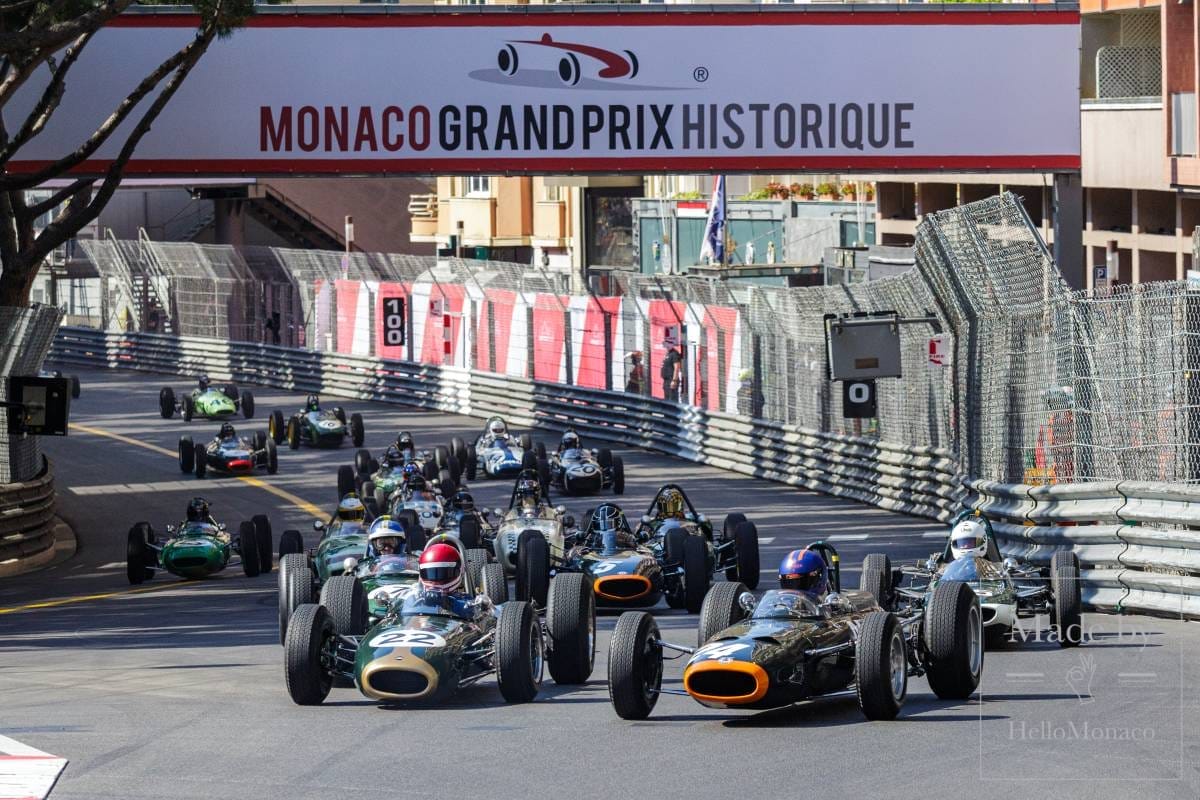
Formula 1: the 1990 McLaren MP4/5B
This McLaren MP4/5B was driven in 1990 by Ayrton Senna and his new team-mate Gerhard Berger, following Alain Prost’s departure to Ferrari. It was an evolution of the previous season’s MP4/5, fitted with a new Honda V10 engine. This model took 6 victories and 12 pole positions that year, which concluded with two new world titles, drivers’ and constructors’, for Senna and
McLaren. And there was a spectacular finale at Suzuka, when the Brazilian deliberately eliminated his great French rival. In the Parade in the streets of Monaco, this amazing single-seater was driven by Bruno Senna, the nephew of the three-time world champion, who competed in 46 F1 Grands Prix.
Winners Of The 14th Edition Of The Grand Prix Historique De Monaco
And following Saturday’s emotional Parade was Sunday’s finale of the races in the 14th Grand Prix Historique. On race day the Grand Prix de Monaco Historique delivered a spectacle as each car crossed the finish line. History was made anew, ensuring that the legacy of Monaco’s racing heritage continues to inspire generations.
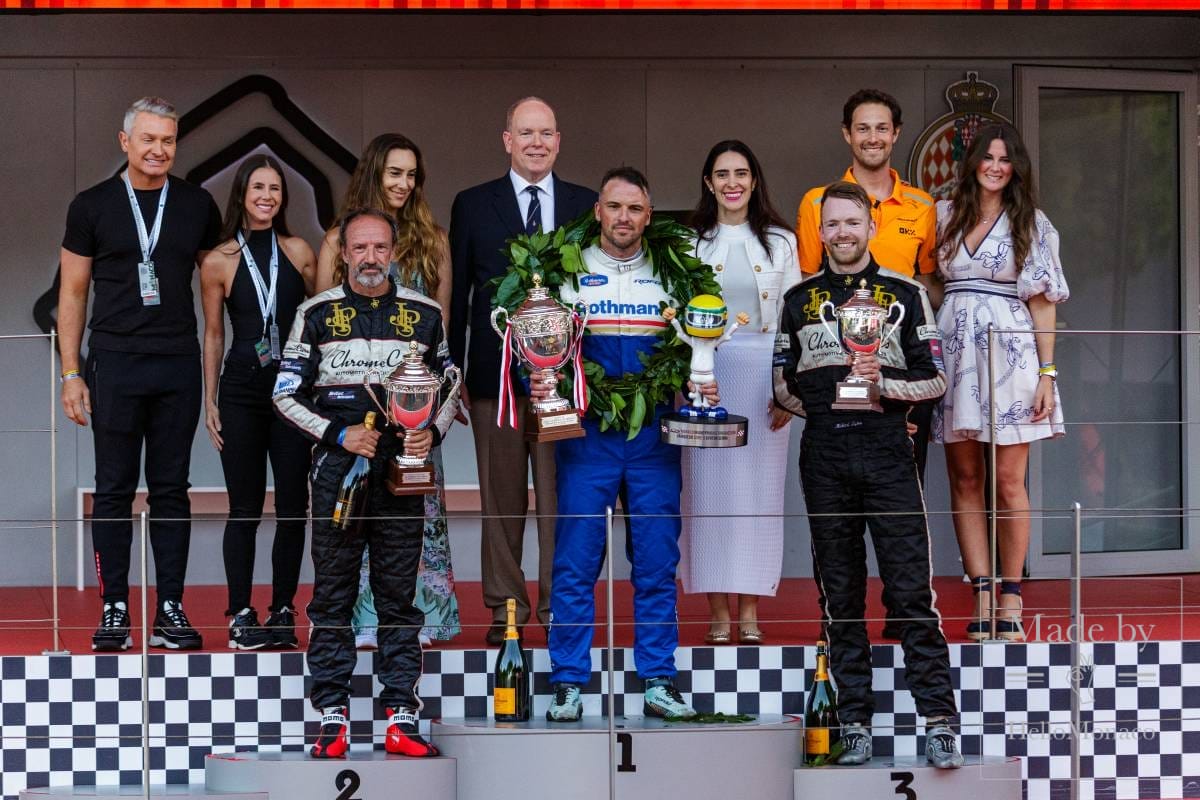
And now to salute this year’s winners:
Race A1 – Monaco Hero Louis CHIRON: Paddins Dowling (Ireland)
Race A2 – Juan Manuel FANGIO: Claudia Hürtgen (Germany)
Race B – Graham HILL: Andy Middlehurst (Great Britain)
Race C – Vittorio MARZOTTO: Max Smith-Hilliard (Great Britain)
Race D – Jackie STEWART: Katsuaki Kubota (Japan)
Race E – Niki LAUDA: Stuart Hall (Great Britain)
Race F – Gilles VILLENEUVE: Michael Lyons (Great Britain)
Race G – Ayrton SENNA: Stuart Hall (Great Britain)
Crashes In The Historic Grand Prix
Motorsport still means crashes. Fortunately nowadays, and much due to pioneering work by Jackie Stewart on safety, crashes are rarely fatal. And let’s admit it, crashes are spectacular and you certainly get your fair share at the “Historic”.
Charles Leclerc in 2022
Surely you will be surprised to see the name Leclerc pinned to a crash in the Historic. Formula 1 points leader at the time Charles Leclerc crashed an ex-Niki Lauda classic Ferrari Grand Prix car during a demonstration run at the 2022 Monaco Historic event. The 2022 Bahrain and Australian GP winner was on his third lap aboard the 1972 Ferrari 312B3 as part of a parade alongside ex-Ferrari driver and six-time Le Mans 24 Hours victor Jacky Ickx. There he lost the rear of the 312B3 into the famous La Rascasse right-hander.
Leclerc backed out of the barriers but pulled up on the main straight with smoke wafting from the rear of his car, and Ickx stopped a little further up the road in his earlier 312B. A frustrated-looking Leclerc and a pair of marshals inspected the damage before chatting with Ickx. He later tweeted: “When you thought you already had all the bad luck of the world in Monaco and you lose the brakes into rascasse with one of the most iconic historical Ferrari Formula 1 cars.”
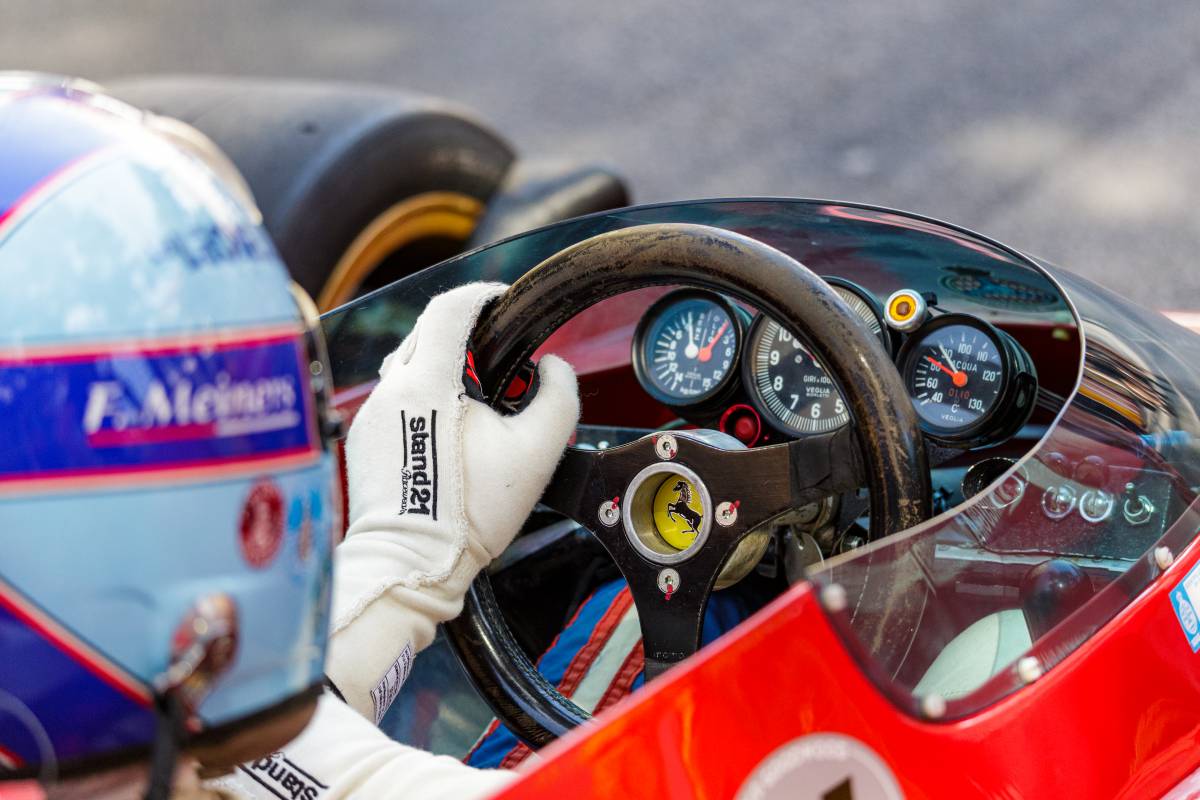
Jean Alesi and Marco Werner in 2021
The Historic Grand Prix has its fair share of exciting incidents for spectators. They often involve controversy especially when it costs a driver a winning place on the podium.
After not taking place in 2020, the Historic Grand Prix of Monaco finally went ahead in 2021 and featured a huge number of famous drivers and cars from Formula 1’s history. One such driver was Canadian Grand Prix winner Jean Alesi. He lined up on the grid in the Ferrari 312B3 that Niki Lauda drove for the entirety of 1974, his first year with the Italian team, and for the first two races of his title-winning campaign in 1975.
Lining up in P2 behind three-time Le Mans 24 hour winner Marco Werner, who was in the 1976 Lotus, Alesi flew off the line to take the lead at the start. With slightly more modern and quicker machinery, Werner had much more pace and immediately began to pressure the Frenchman but couldn’t find a way through on the narrow streets of Monte-Carlo, coming perilously close to hitting the back of his rival on a number of occasions. With three laps to go, he finally did so, clipping the Ferrari on the start/finish straight, sending Alesi into the barriers and out of the race.
Werner crossed the line first but was handed a penalty for the incident that dropped him back down to P3, meaning that the McLaren M26 of Michael Lyons claimed victory.
Harsh words followed when Jean Alesi and Marco Werner both spoke out following this controversial clash in a historic Formula 1 race at Monaco. “When there is no space, you cannot pass,” Alesi said afterwards.
Alesi was critical of his German rival: “… I was enjoying it, sliding this fantastic car around the streets of Monaco, but twice he touched me out of the chicane” said the 1995 Canadian Grand Prix winner. “He had a lot more torque than my car. Already that’s a warning …”
But Werner, who says a clutch issue hampered his start and helped Alesi jump ahead, was also unhappy with the Ferrari driver. “I was the faster one. Unfortunately, he missed a shift and I was just too close to avoid contact. That’s it… I would never have done it on purpose,” said Werner.




